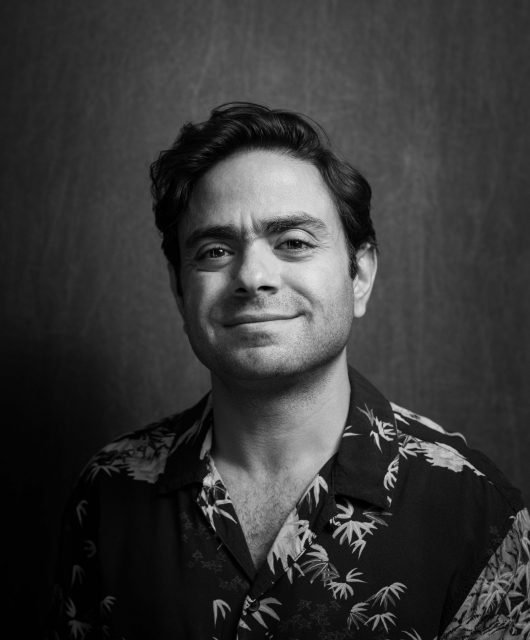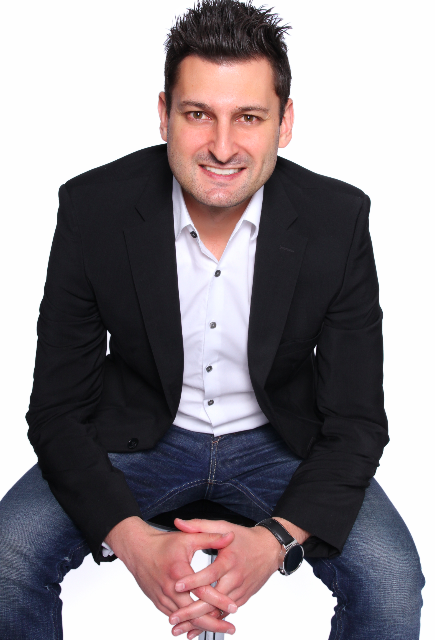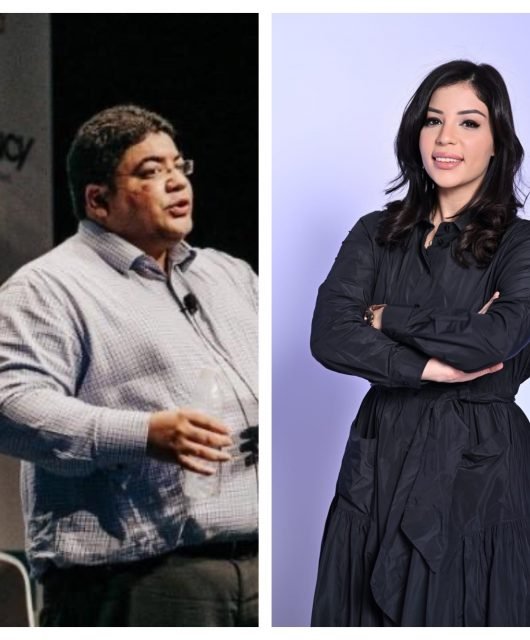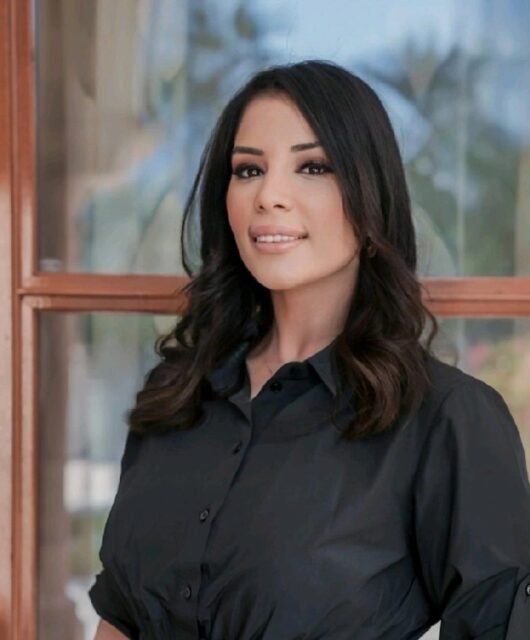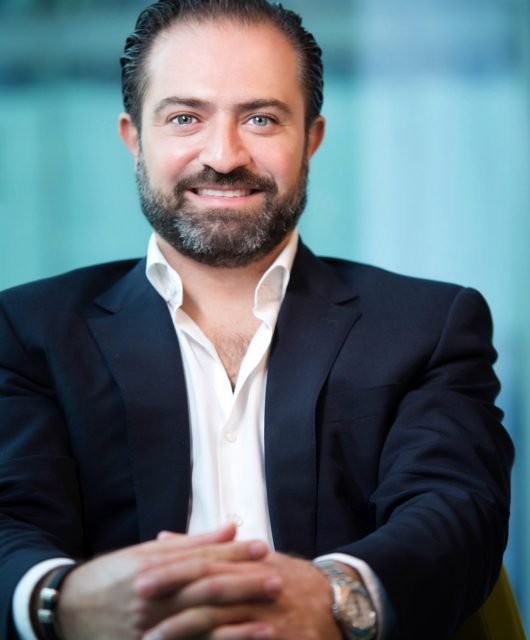How Are FIFA World Cup 2022’s Marketing And Advertising Efforts Different So Far
By: Firas Hariz, Senior Manager, Media – Digitas, a Publicis Groupe company
FIFA World Cup Qatar 2022™ is continuing to engage with audiences worldwide in record-breaking numbers across various markets. The event is in full swing, and brands are competing fiercely on air and the ground.
While Qatar welcomed people from all over the globe and provided incredible organization and enjoyment, it will be interesting to explore the marketing aspect with FIFA estimating that up to five billion will watch the Qatar 2022 WC (World Cup) by the 18th of December so let’s wait and see!
When we look at the figures FIFA provided by the 1st of December, and simply at TV viewership, we can find that the group stages’ current numbers have surpassed those of 2018, particularly in Japan, Europe as a whole, the US, and Argentina. For instance, ratings in Japan are up 74% over the previous WC group stages.
Generally, many bands take advantage of this event to advertise and get innovative. Let’s dig deeper into the insights of this game’s advertisements, especially during the festive season!
We’ve all spotted their logos, but as a start, here’s a greater grasp of the active brands and sponsors in the FIFA WC 2022 taking place in Qatar in the below photo.
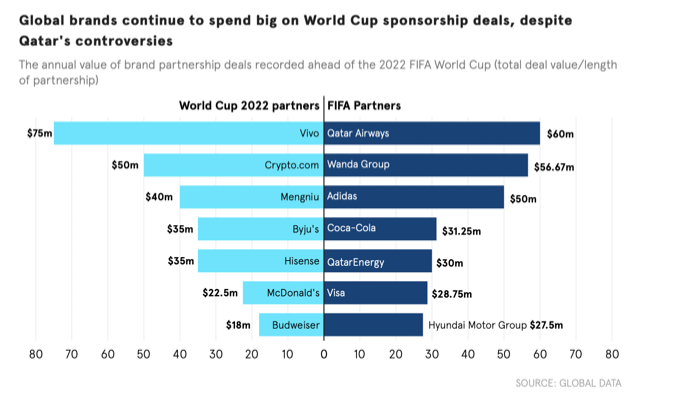
While the MENA region caught everyone’s attention, Qatar outshined itself by hosting a lavish WC! All stadiums and advanced needed infrastructures are built from scratch, the first WC taking place in West Asia, and the first during the festive season (which made it a bit more challenging for brands on how and where to spend their money).
The sponsors of the Qatar tournament have played a major role and continue to be present throughout the games. Some sponsors will likely be recognizable, especially those that have been FIFA’s “partners” for a long time, but others, including the software company Globant, the Indian education tech company Byju’s, and Crypto.com, are exclusive to this season.
Going down the lane with a Throwback to FIFA World Cup 2018, where France defeated Croatia, we have seen brands also competing fiercely and spending huge budgets. But only the ones with the smart strategies ‘scored’ – for instance, despite Adidas being one of the major sponsors, Nike ambushed the WC, leading more than 50% of consumers to believe that their sportswear company was the official tournament sponsor, according to a research by Campaign.
What are the Big Brands Doing in this World Cup?
Marketing for the FIFA event has excelled this year, especially around Black Friday, Cyber Monday, and just before Christmas. Brands have jumped on a variety of marketing strategies, from the on-ground presence and metaverse/AI experiences to digital activations. However, here are some of the campaigns that have been getting a lot of attention since the WC began.
This year, Louis Vuitton surpassed expectations! In the long-running debate over who is the greatest soccer player of all time, the most iconic Louis Vuitton artwork features Messi and Ronaldo struggling over chess and the trophy.
Regarding the WC, you can’t help but think of Adidas, which outdid itself with its FIFA WC 2022 marketing campaign. They collaborated on a campaign that brings together the Adidas family to celebrate the joy of football. It features Karim Benzema, Achraf Hakimi, Son Heung-Min, Jude Bellingham, Pedro “Pedri” González López, Serge Gnabry, and Stormzy, a British artist and fan.
Adidas’ advertisement attempts to unite not only the family but also all of the fans. “When football is everything, impossible is nothing,” was the main tagline. Watch it below if you haven’t yet.
Other companies, like Ryanair, are taking use of entertaining organic posts to increase engagement during the tournament. We all realize, however, how cautious brands should be when using such messages as they might stir up controversy if not carefully considered.
Aside from digital campaigns, several firms in GCC are advertising through various channels during the WC. Budweiser, Adidas, and Hence are participating in the FIFA Fan Festival in Dubai, which is being organized by FIFA. Other brands are attempting to use ambush marketing by being present at the event and communicating with attendees, such as KFH, which is sponsoring Kuwait’s largest WC fan zone.
Due to the presence of Gen Z and the lifestyle they have chosen, firms’ marketing techniques have changed throughout this tournament. We’ve all seen how TikTok has grown in popularity among young people in recent years. Today, it’s all about the content.
How Brands’ marketing activities get Affected through-out the tournament?
We all know that brands are eager to see the teams or athletes they sponsor advance to the event’s finals. They keep track of all events as they occur while looking for chances to encourage more engagement. As a result, their spending over the period leading up to the final day may increase or decrease.
For instance, was it within the budgetary guidelines when Adidas lit up Ain Dubai to honor Messi’s 1,000th professional match a few days ago following his match against Australia? Perhaps, but not if Argentina had dropped out of the group stage.
Big sponsors take the extra mile sometimes relying on channels other than the media, and their involvement in the WC may continue after the competition has ended. Going back to the competition in 2018, Nike defeated Adidas thanks to a clever marketing plan the company used to generate buzz.
Nike played a significant role in the final match as a sponsor of both the French and Croatian teams. As soon as the match was completed and the “Bleus” were announced the WC champions, Nike revealed via a social media post that the French Team’s two-star shirt was immediately available for purchase. Nike had previously printed 20,000 jerseys with two stars before the game, building significant hype.
How are Brands Merging the World Cup Advertising with the Festive Season?
Combining the greatest and most anticipated sporting event of the year with the most festive and joyful time of the year is bound to thrill fans… and brands! The WC ‘s proximity to the holiday season gives marketers an exceptional opportunity to raise visibility, be creative, and increase revenue.
While some firms may have found it challenging, others seized the opportunity to incorporate two holidays into a single advertising.
For example, Fox Sports grouped Jon Hamm, Tom Brady, Mariah Carey, and Ellie Kemper in an advertisement to promote FIFA WC coverage. It included some of today’s brightest performers and highlighted just how spectacular this time of the year is. Watch it below.
Pringles is another brand that has effectively combined Christmas with the WC. With a combination of football cheers and Christmas carols, a short video perfectly depicted the exciting atmosphere combined with the festive feel. Check it out if you haven’t already!
Companies invest heavily in advertising and work on creative ads to reach a large audience and have successful advertising strategies. But let’s have a quick look at why is advertising in the World Cup effective.
When emotions run high during the WC, companies and advertising have the power to ride the “emotional wave” and benefit from it. In terms of advertising efficacy, and according to Digital Turbine studies, 54% of WC viewers are likely to seek out and watch a commercial that aired during the tournament. In addition, 83% are likely to consider purchasing a product that they have seen advertised. Per Euromericas Sport Marketing, 76% of fans are more likely to find out about a brand if it sponsors sporting events, and 69% of them choose its products if the price or quantity is similar to that of its competitors.
According to IPSOS, emotional engagement, which is a key metric to look at, rises considerably during the WC. It’s the emotional response, whether positive or negative, weak or powerful to the brand activity. And they discovered that, if ads are used properly, they can significantly increase emotional engagement during the WC, according to their study in which they used (EEG), a technique for monitoring electrical activity in the brain.
When looking at the TV only, based on new data from Thinkbox on the Euros 2020, football offers incredibly cost-effective reach, especially among younger and wealthier consumers. Campaigns with 300-400 ratings can easily attain the same level of 1+ reach as campaigns with 900 ratings outside the tournament.
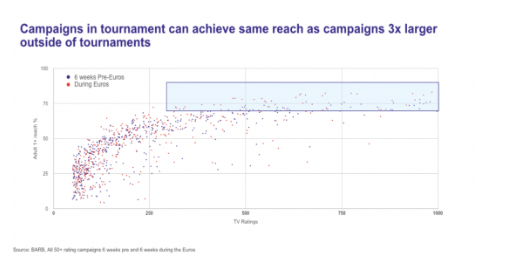
There is plenty to be learned from this WC and prior ones, including different marketing strategies and consumer insights that can help us better plan for forthcoming events with the goal of achieving the most effective and efficient outcomes.
In the lead-up to the World Cup final, keep an eye on the ad placements and sponsors!

